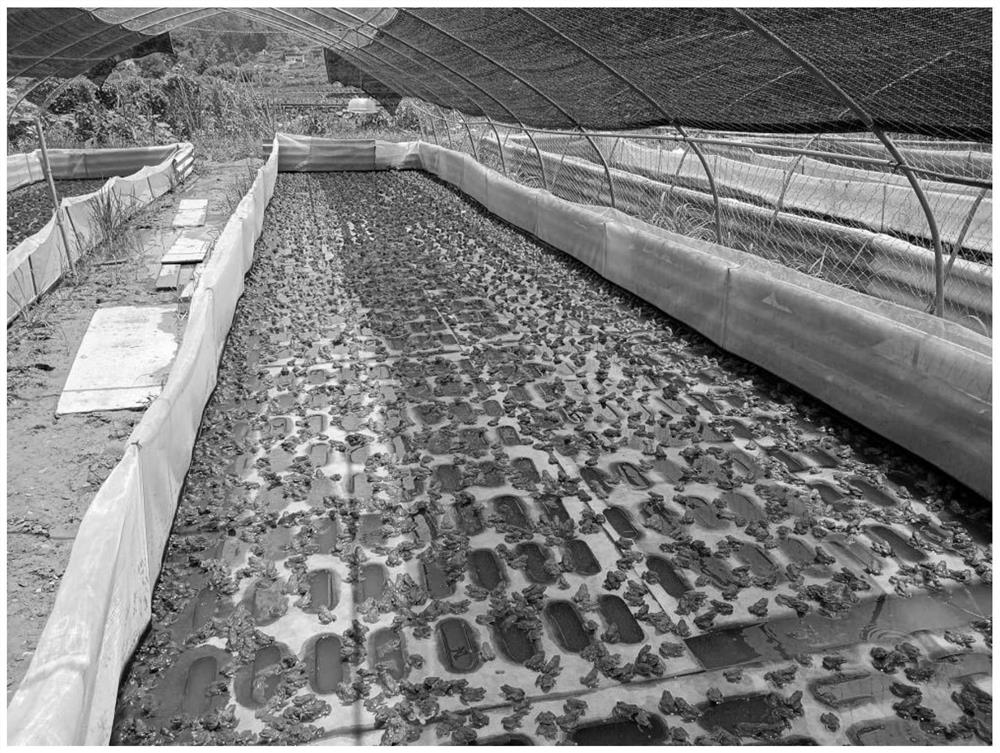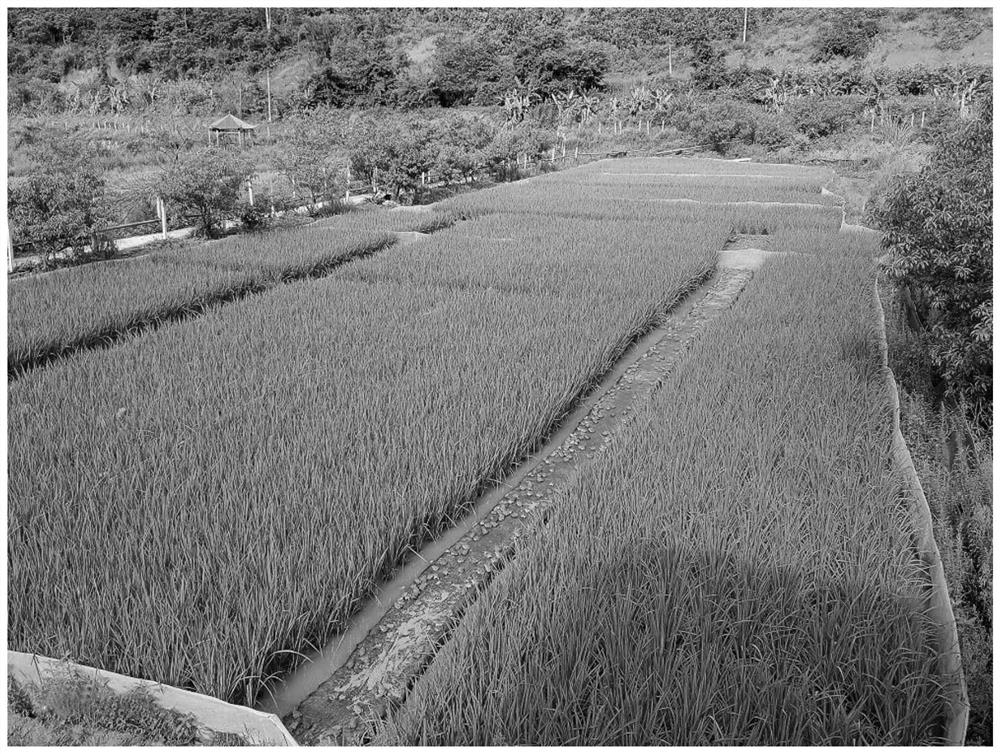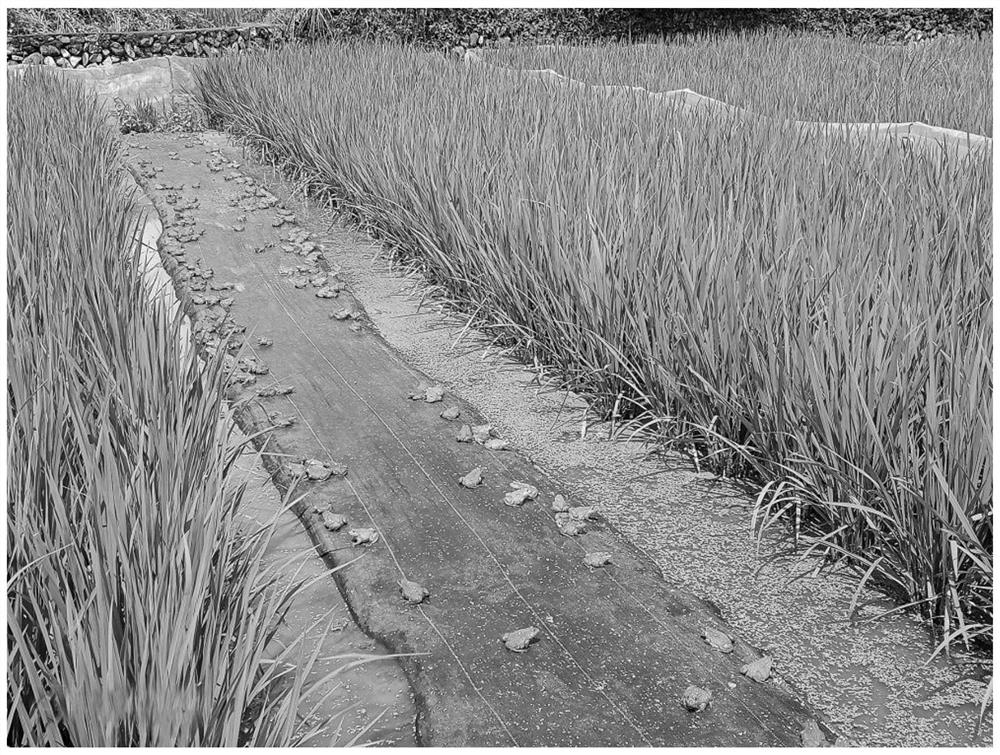Ecological breeding method for polyculture of Thailand tiger frogs in rice field
A technology of ecological breeding and tiger frogs, which is applied in fish farming, rice cultivation, climate change adaptation, etc., can solve the problem of difficult to realize the high-efficiency desire of artificial breeding tiger frogs, the tail water does not meet the discharge standards, and the tiger frog mu Problems such as low output, to achieve the effect of increasing annual output value, reducing the probability of occurrence, and increasing output
- Summary
- Abstract
- Description
- Claims
- Application Information
AI Technical Summary
Problems solved by technology
Method used
Image
Examples
Embodiment
[0046] refer to Figure 1 to Figure 7 , a kind of ecological cultivation method of paddy field polyculture Thai tiger frog, comprises the following steps:
[0047] (1) in March, carry out Thai tiger stripe frog seedling cultivation in the seedling training pond, the width of the seedling training pond is 250cm, the length is not limited, and length is 350cm among the present embodiment, and the seedling training pond adopts greenhouse to carry out temperature control, surrounding Set up insect-proof nets, use frog mats at the bottom, keep the pond clean, and put in special feed for frogs, so that frog seedlings can adapt to the feeding method of granular static feed. Tiger frogs can only be put into rice fields when they grow to 20-30g / head;
[0048] (2) Choose quiet, convenient drainage, no pollution in water quality, and easy management as the paddy field for cultivation, and the area of the paddy field is 200 square meters;
[0049] (3) Before the rice is planted, the we...
PUM
 Login to View More
Login to View More Abstract
Description
Claims
Application Information
 Login to View More
Login to View More - R&D Engineer
- R&D Manager
- IP Professional
- Industry Leading Data Capabilities
- Powerful AI technology
- Patent DNA Extraction
Browse by: Latest US Patents, China's latest patents, Technical Efficacy Thesaurus, Application Domain, Technology Topic, Popular Technical Reports.
© 2024 PatSnap. All rights reserved.Legal|Privacy policy|Modern Slavery Act Transparency Statement|Sitemap|About US| Contact US: help@patsnap.com










